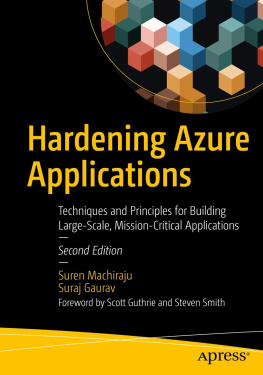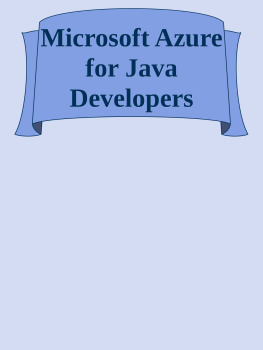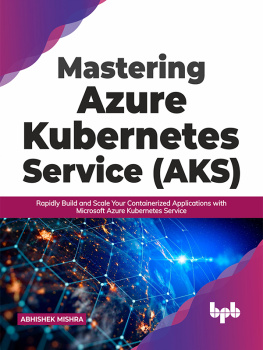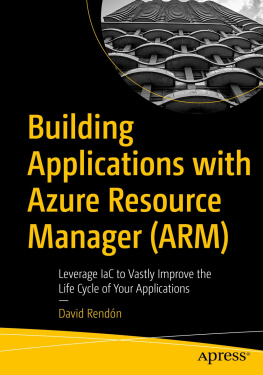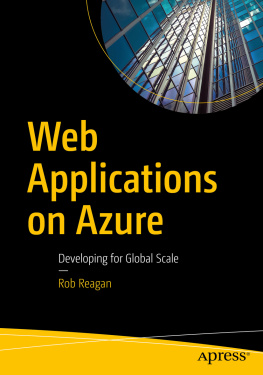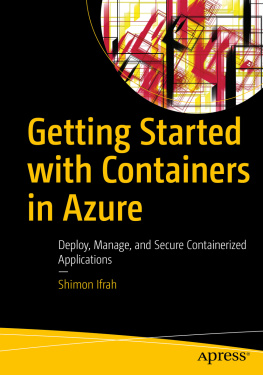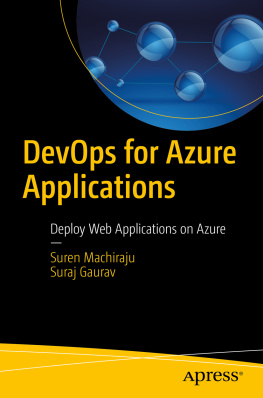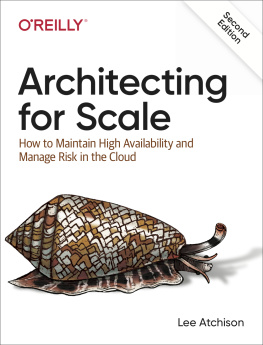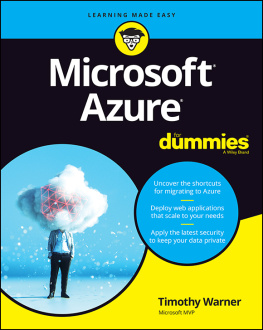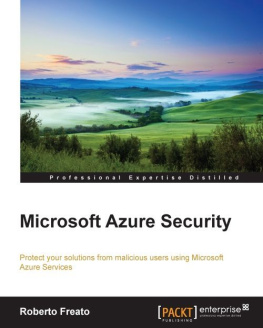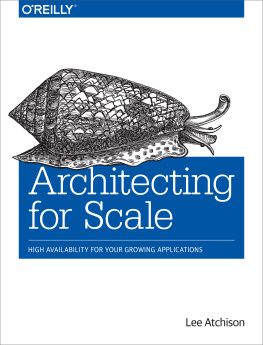1. Introducing the Cloud Computing Platform
This chapter introduces two of the most widely used cloud platformsAmazon Web Services and Microsoft Azure.
We will begin with a review of cloud concepts and the relevance and benefits of using the cloud. Then, well discuss how to assess whether your application is a good fit for cloud platforms. Finally, we will look at some of the most significant service offerings these two cloud platforms have to offer.
Cloud and Platform
The term cloud originates from network diagrams that use a cloud shape to indicate the Internet or networks outside of a company firewall. Of course, a platform is the infrastructure that hosts and runs a software application and allows it to access and integrate with other software applications. In a cloud platform , a software application is not inside your network. Instead, it is housed in a virtual network and is maintained and managed in data centers that are operated by vendors like Amazon and Microsoft. Users access the cloud platform through the Internet.
From your perspective as a developer or software architect, the concept of the cloud platform is similar to a traditional on-premises platform, in which the servers and infrastructure are installed within your organization or at your local data center. The servers operating system provides the infrastructure to host your application and connect it to storage and other computers and devices. The cloud platform will also provide the operating system, storage, and network your application requires to perform its business processes.
A cloud platform provides all the components and services required to architect, design, develop, and run your application. It also provides the necessary infrastructure to integrate with other applications running at private data centers.
Relevance of the Cloud Platform
We are often asked in casual conversations whether the cloud is a passing fad. We always respond with an emphatic no, and to make our point, we share data on the adoption rate and supplement it with an interesting example.
A few years ago, a Bain & Company report noted that by 2020, revenue from cloud products and services would mushroom from $20 billion to $150 billion. It turns out that adoption rate was wrong; we exceeded $180 billion by 2018, which is 14% of total IT spend.
Michael Heric, Partner at Bain & Company
Yes, 14% of the IT spend goes toward paying for the cloud platform. Whats more, the operating and licensing costs are amortized over an extended period, which bodes well for all of us, since IT departments will have more funds to invest in its people and projects.
Until the late nineteenth and early twentieth centuries, all manufacturing plants operated their own power plants. As power lines became reliable and electricity production was standardized (by both voltage and frequency), manufacturing plants increasingly sourced their power from utility companies that specialized in power generation. These newly created utility companies delivered electricity reliably and, due to economies of scale, cost-effectively. For backup, industries retained some power-generation capacity, though in modern times this practice has significantly diminished.
Centralized cloud platforms present a similar scenario. Managing computer and network equipment and maintaining data infrastructure software is not easy, and many small companies lack the talent and specialization to do so. On the other end of the spectrum, there are a few companies like Microsoft and Amazonfor whom creating software and managing data centers across the globe is their core business. These companies have the capacity to continually innovate and improve data center efficiency, all while delivering services reliably and securely.
Cloud Platform Benefits
The cloud platform is an attractive choice for some due to the ability to scale, the time to market, and the security features. Cloud platforms have made significant strides in both physical and software security through huge investments that have outpaced those of enterprise data centers. Amazon Web Services and Microsoft Azure are the two biggest cloud platform vendors. Amazon has the benefit of being the first cloud platform vendor, whereas Microsoft enjoys high levels of trust from businesses that already use its other enterprise software products. Cloud vendors:
Provide faster turnaround times: Ready-to-use services and related features can be accessed quickly.
Lower IT effort: The efforts required to procure and deploy hardware and software have been reduced.
Reduce risks: There are no up-front costs to procure hardware or licensing software; you pay for what you use.
Heighten agility: Solutions can be scaled up or down instantaneously in response to user demand.
Your Application and Cloud Platform Matchup
Before we delve into the specifics of the composition of the platform, let us make sure your application is the right fit for a cloud platform, and that the cloud platform is ready for your application.
Does Your Application Belong on the Cloud Platform?
Over the past few years , there has been a surge in the use of cloud platforms due to the deployment of mainstream and mission-critical enterprise-class applications. Scale and cost of ownership are two key reasons these enterprise-class applications are moving to the cloud platform:
Scale: Zero to near-infinite resources are available. Your applications can scale up or down depending on user load. This means you never have to worry about running out of capacity or, more importantly, about over-provisioning.
Cost of ownership: Paying for what you use is one obvious cost, but expenditures associated with deploying, securing, and sustaining the deployment are lower since these are distributed to multiple customer accounts .
As a developer, you should have conversations with business owners to ensure that the ability to scale and the total cost of ownership are compatible with your situation. Cloud deployment comes at a significant cost, especially if integration with existing on-premises infrastructure is required for your application. Both Amazon and Microsoft provide cost calculators. While these calculators give ballpark estimates of hosting an application on their cloud platforms, you will still need to factor in the cost of integrating your cloud application with an on-premises solution.
Note
You may be familiar with the process of hardening steel, and the fact that it dramatically alters the metals characteristics and prepares it for long life in a high-stress environment, while staying at an affordable price point. This can act as a metaphor for software applications: hardened applications are expected to be lightweight in order to operate with a low resource footprint; be resilient enough to handle a large volume of uses; scale out without duress; be secure; and, finally, remain consistently future-proof. The cloud platform provides you with the proper tools and services to harden your application.
Hardening an application will add to these costs. Simply stated, its important to have an understanding of the overall cost and potential risks of the project before you embark on this journey.
Finally, not every application is compatible with a cloud platform. Would Coca-Cola put its secret formula on the cloud? This decision may not have anything to do with cloud platform security or accessit could just be about retaining full control of a top asset.

